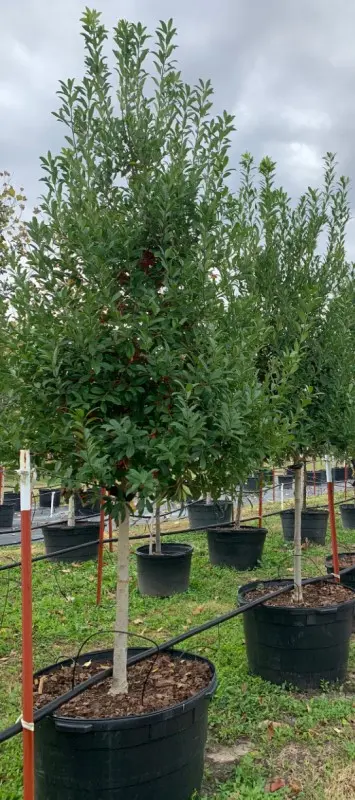-
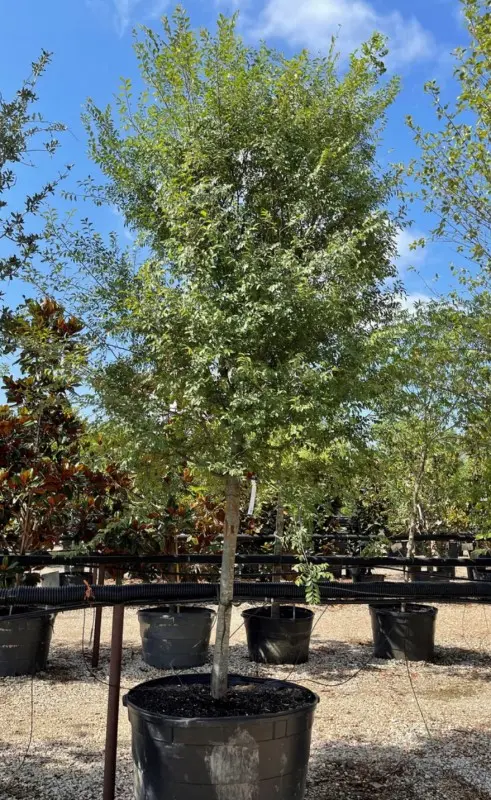
Elm Tree
$0.00
Deciduous (loose leave in winter)
Grows up to 24" per year
Up to 35'
Elm Tree (Ulmus spp.) is a large, deciduous tree admired for its graceful, vase-like shape, broad canopy, and resilience in urban and rural landscapes. Native to Europe, Asia, and North America, elms are known for their broad, serrated, dark green leaves that turn golden yellow in the fall, providing seasonal color and shade. The tree's mature bark is rugged and deeply fissured, adding texture and character to the landscape. Common varieties include the American Elm (Ulmus americana), the Chinese Elm (Ulmus parvifolia), and the English Elm (Ulmus procera).
Elms typically grow between 60 and 80 feet tall, with a spread of 40 to 70 feet, creating a broad, arching canopy that provides ample shade. They thrive in USDA zones 4-9, depending on the species, and adapt well to a variety of soil types, including clay, loamy, and sandy soils. Elms are best planted in full sun to partial shade and benefit from well-draining, moderately fertile soil, though they are moderately drought-tolerant once established. Known for their versatility, elms are often planted as shade trees in parks, along streets, and in large residential landscapes.
In recent years, elms have been bred for increased disease resistance, especially against Dutch Elm Disease, which affected many native elms in North America. Low-maintenance overall, elms require occasional pruning to remove dead or damaged branches and maintain airflow through the canopy. With their expansive, arching forms, vibrant fall colors, and adaptability, elm trees are a timeless choice for adding shade, beauty, and structure to diverse landscapes.
-
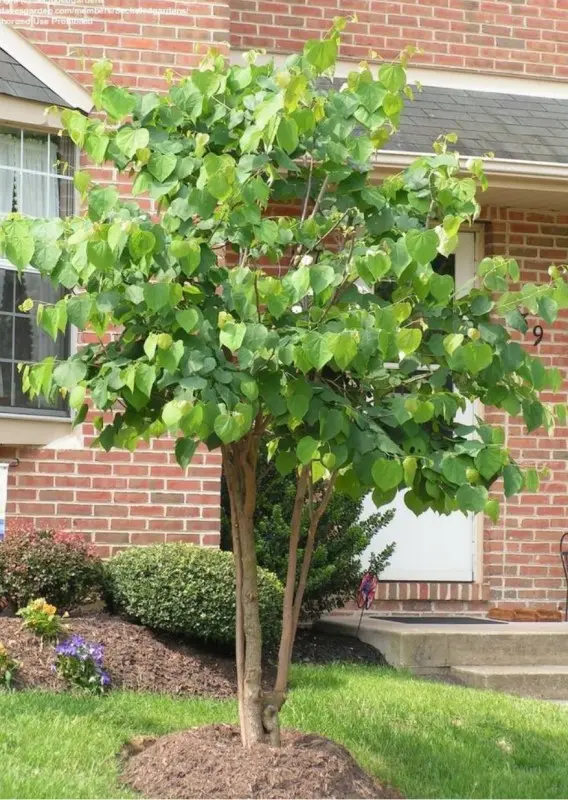
Eastern Redbud
$0.00
Deciduous (loose leave in winter)
Up to 20'
Grow up to 12" per year
-
Eastern Redbud (Cercis canadensis) is a small deciduous tree celebrated for its vibrant early-spring blooms, heart-shaped leaves, and graceful form. Native to eastern North America, this tree produces clusters of small, pea-like flowers in shades of pink to lavender that appear along the branches and trunk before the leaves emerge, creating a striking display of color. These blossoms attract pollinators, such as bees and butterflies, and are followed by dark green, heart-shaped leaves that turn yellow in the fall.
Eastern Redbud typically grows to 20 to 30 feet in height with a similar spread, making it well-suited to residential landscapes, as an understory tree, or as an accent in mixed borders. It thrives in USDA zones 4-9, preferring full sun to partial shade and performing best in moist, well-draining soil, though it can tolerate a range of soil conditions, including clay. While it benefits from regular watering, Eastern Redbud is relatively drought-tolerant once established.
This low-maintenance tree requires minimal pruning, usually only to remove any dead or damaged wood, ideally done in late winter. It is generally resistant to pests and diseases, though it can be susceptible to canker in very humid climates.
With its early-season blooms, attractive foliage, and compact size, Eastern Redbud is a versatile tree that adds elegance and charm to gardens, parks, and streetscapes. Its vivid spring flowers and appealing form make it a favorite for adding color and structure to the landscape, especially in early spring.
-
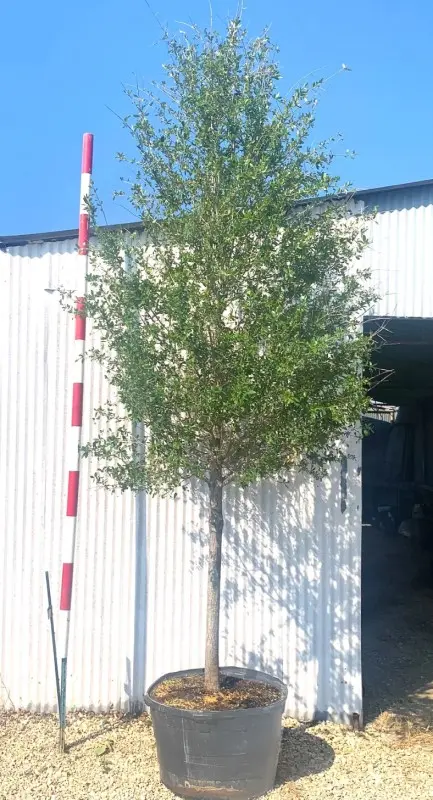
Live Oak
$0.00
Evergreen
Grow up to 24" per year
Up to 70'
-
Live Oak (Quercus virginiana), also known as Southern Live Oak, is an iconic, evergreen oak tree admired for its sprawling, majestic form and resilience in a variety of landscapes. Native to the southeastern United States, this tree features dark, glossy green leaves that are oblong and leathery, remaining on the tree year-round. Its branches spread wide and low, often creating a canopy much wider than the tree’s height, which can reach 40 to 80 feet tall and spread up to 100 feet or more. The gnarled, sprawling limbs of the Live Oak make it especially striking, creating a dramatic, ancient appearance in mature trees.
Thriving in USDA zones 7-10, Live Oak prefers full sun and can adapt to various well-draining soil types, including sandy, clay, and loamy soils. Known for its durability, this tree is highly tolerant of drought, salt, and even occasional flooding, making it suitable for both coastal and inland landscapes. Once established, Live Oak requires minimal watering, making it an excellent choice for low-maintenance or xeriscape gardens in warmer climates.
Low-maintenance and long-lived, Live Oaks require little pruning except to remove dead or crossing branches. Their dense, spreading canopy makes them popular shade trees in parks, large residential landscapes, and historical sites. The tree also supports an array of wildlife, providing habitat and food for various species, including birds and squirrels. With their timeless appeal, dense canopy, and robust adaptability, Live Oaks bring beauty, shade, and ecological value to the landscape, becoming a cherished feature for generations.
-
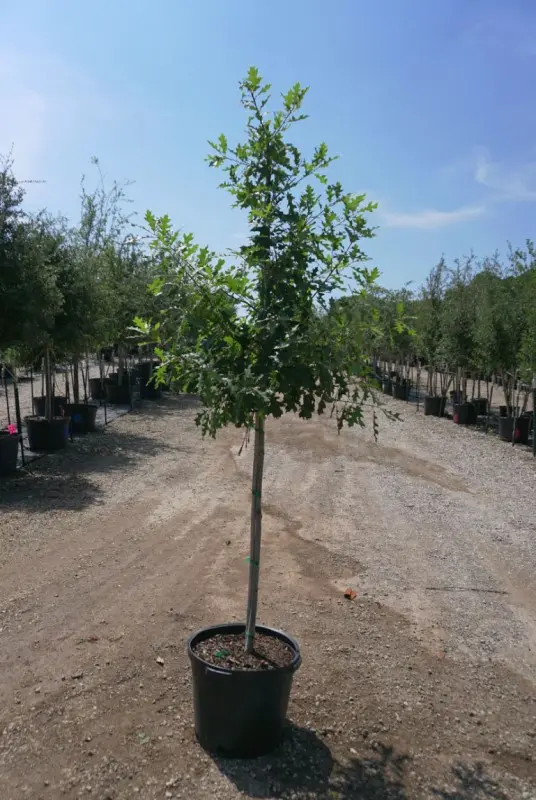
Bur Oak
$0.00
Evergreen
Grow up to 12" per year
Up to 70' tall
-
Bur Oak (Quercus macrocarpa), also known as Mossy Cup Oak, is a large, deciduous oak tree known for its thick, deeply furrowed bark, massive acorns, and impressive resilience. Native to North America, the Bur Oak can reach heights of 70 to 80 feet with a similar or slightly smaller spread, making it a grand, stately tree ideal for open landscapes. Its large, lobed leaves turn a golden yellow in the fall, adding seasonal interest, and its unique acorns—some of the largest of any oak—feature a fringed, “mossy” cap that provides an important food source for wildlife.
Bur Oaks thrive in USDA zones 3-8 and are well-suited to full sun and a variety of soil types, including clay, sandy, and loamy soils. They are especially tolerant of drought, pollution, and even poor soil, making them highly adaptable for urban environments and large open spaces. This tree’s deep, extensive root system enables it to withstand extreme conditions and contributes to its exceptional longevity, with many Bur Oaks living several hundred years.
Low-maintenance and pest-resistant, Bur Oaks require little care beyond occasional pruning in late winter to remove dead or damaged branches. Their robust structure and hardiness make them popular as shade trees in parks, golf courses, and expansive properties, where their large canopy provides cooling shade and creates a picturesque landscape. With its rugged bark, distinctive acorns, and adaptability, Bur Oak offers both ecological and aesthetic value, standing as a resilient, enduring presence in any landscape.

